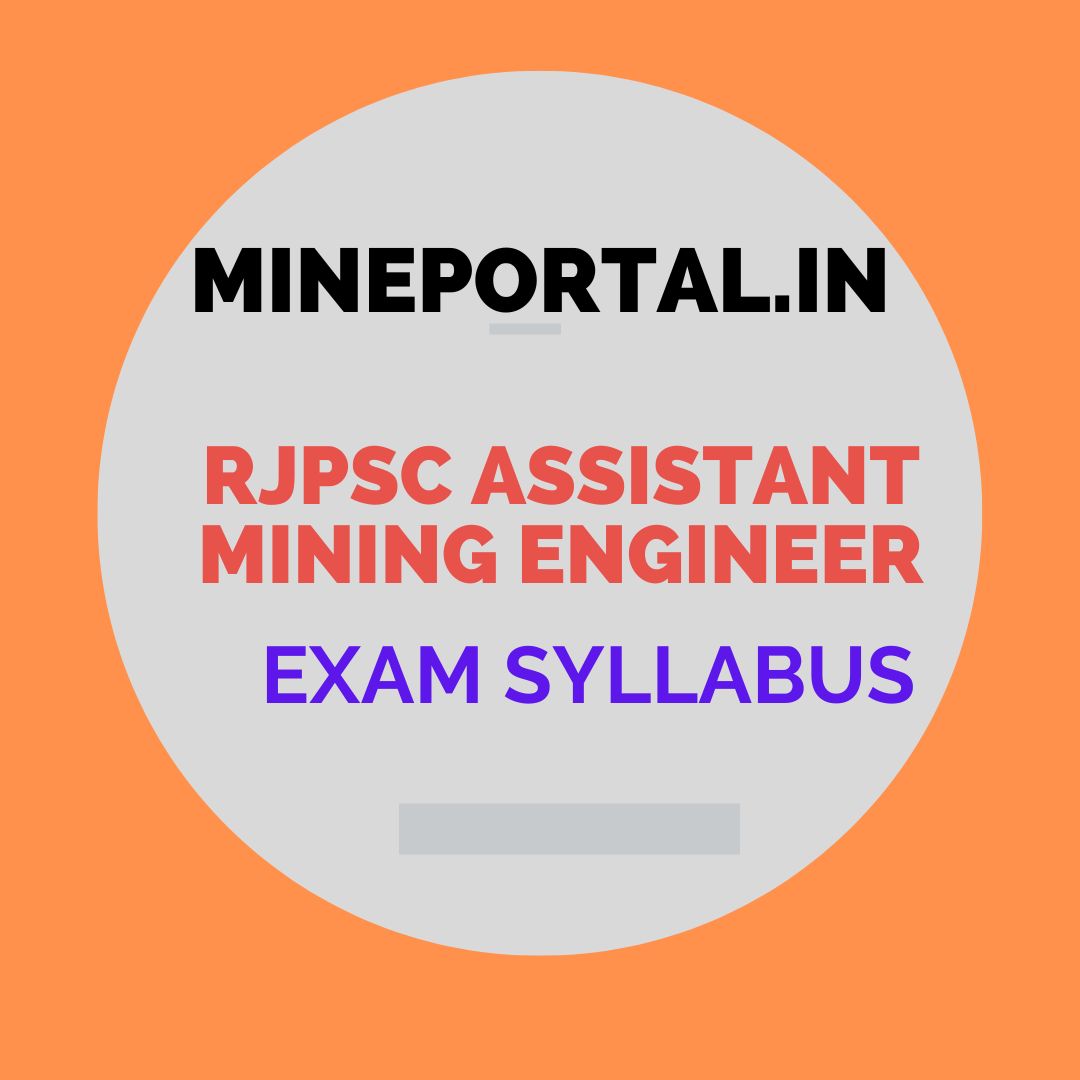
RJPSC ASSISTANT MINING ENGINEER EXAM SYLLABU & EXAM PATTERN
Rajasthan Public Service commission, Ajmer Syllabus for Screening Test for the post of ASSISTANT MINING ENGINEER
Basic Concept of Mining
Terminology in Mining, Mineral and Energy resources of Rajasthan, India and World, Resources of dimensional stone in Rajasthan and India, Lease allotment process and other legal aspects, Export policy, Problems in dimensional stone industry.
Prospecting & Exploration : Reconnaissance, Principles and Methods, Trenching & Pitting, boring methods, drilling muds, directional drilling, access to underground deposit, horizontal & vertical development.
Mining Machinery
Compressor : Types, principle, construction and use.
Rope Haulage : Types, construction, installation, maintenance and comparison.
Locomotives : Different types, construction, operation and maintenance.
Wire Ropes : Types, construction, installation, maintenance and tests, space factor, rope splicing, different rope capels and capping process.
Winding : Shaft fittings, different types of winding systems and winders, braking, safety devices, detaching hooks.
Methods of work
Underground Coal : Development & extraction of coal by “board & pillar method” and longwall method”, depillaring, variants of board & pillar method, various machines used.
Opencast Mining : General details, basic definitions, determination of main parameters, opening of surface mines, disposal of overburden, major4 operations in surface mining viz. ground preparation, drilling, blasting, excavation & loading, transport and machines used.
Underground Metal Mining : Basic information, details of various excavations and structures required for different purposes,
Development : Drifting & tunneling, raising, recent machines and methods for fast development.
Stoping methods : Classification, development work required, stope preparation, haulage, dumping, ventilation, loading, hoising and possible recovery from each method.
Ventilation
Mine Atmosphere : Composition, pollution, physiological affects of mine gases, their detection, heat and humidity in mines, their effect on mine workers, measurement and control, comfort conditions, geothermic gradient.
Ventilation : Necessity and standards of ventilations, laws of ventilation, mine resistance, equivalent orifice, mine characteristics.
Natural Ventilation : Cause, initiation, measurement, motive coloumn.
Mechanical Ventilation : Mine fans, principle types, construction and working, booster and auxiliary fans.
Coursing : Distribution and regulation of air current, splitting, dead end ventilation, forcing v/s exhaust, ascensional v/s descensional, homotropal v/s antitropal systems.
Ventilation Survey : Types, instruments used, methods, booking etc.
Mine Environment and Mine Legislation
Environmental issues in mineral industry, Various pollutions caused by mining activities, their control and mitigation measures viz. Land, Air, Water, Noise, Social, Ground & Air vibration, etc. their measurement & permissible limits.
National Mineral policy, Statutory laws concerned with development and conservation of minerals, Mine and Minerals (Regulation and Development) Act, Mineral Concession Rules, Mineral Conservation and Development Rules, Mines Act, Coal Mines and Metalliferous Mines Regulation.
Rock Mechanics
Application of rock mechanics in mining.
Stress and strain in rocks, physico-mechanical properties of rock and their determination, Failure criteria of rock and rock mass, ground water, its influence on rock and mining, measurement of ground water flow and pressure.
Mine Economics & Management
Mine Sampling : Theory, methods, precautions, reductions, estimation and calculations, mine valuation, life of mine and its present value, capital and operating cost, standard cost and forecast, budget and budgetary control.
Personnel management, training, human resources, job evaluation and incentives, work study, production planning, scheduling and control, productivity, PERT & CPM, purchase and store management, inventory control, value analysis.
Mine Surveying
Theodolites, traversing, closing error, omitted measurements, leveling, tacheometric surveying, contouring, interpolation of contours, curve ranging, correlation.
Stope and face surveying, minor instruments, mine plan and sections, enlargement of plans, dip fault problems, total stations.
Remote Sensing, GPS and GIS
GPS – Meaning and use, working principal and its operation. Types of GPS, Composition and precisensess. Its application in mines in the field of transportation, slope stability, Environment and monitoring.
Remote Sensing : Interaction of EMR with Earth Surface, Sensors, Geosynchronous & Sun synchronous satellite orbit. Resolution : Spatial, Spactral, Radiometric & Temporal. IRS satellite : Types & resolution. Photo interpretation techniques. GIS and its Components, Line, Point, Polygonal features, Data models, Vector, Raster.
Exam Pattern of Question Papers:
1. Objective Type Paper
2. Maximum Marks : 100
3. Number of Questions : 100
4. Duration of Paper : Two Hours
5. All Questions carry equal marks
6. There will be Negative Marking


No comments added yet!